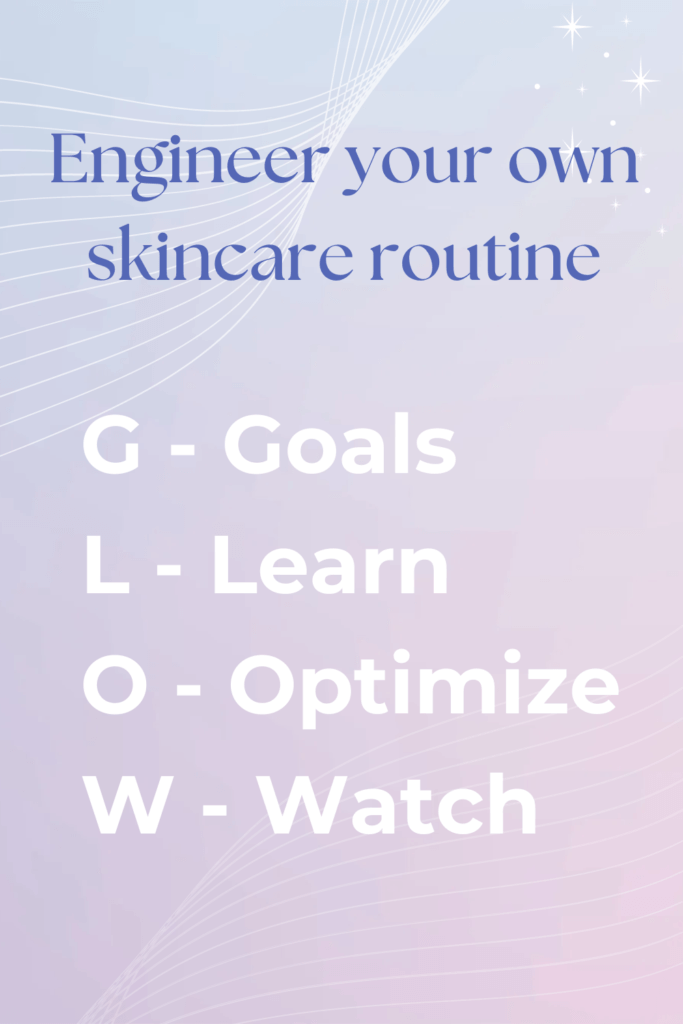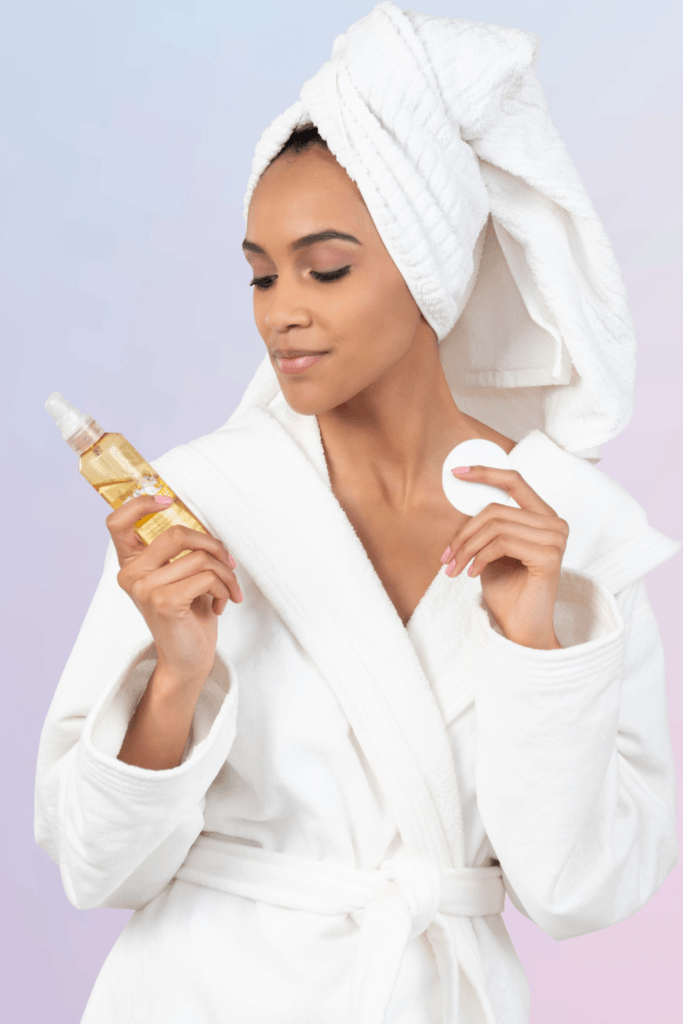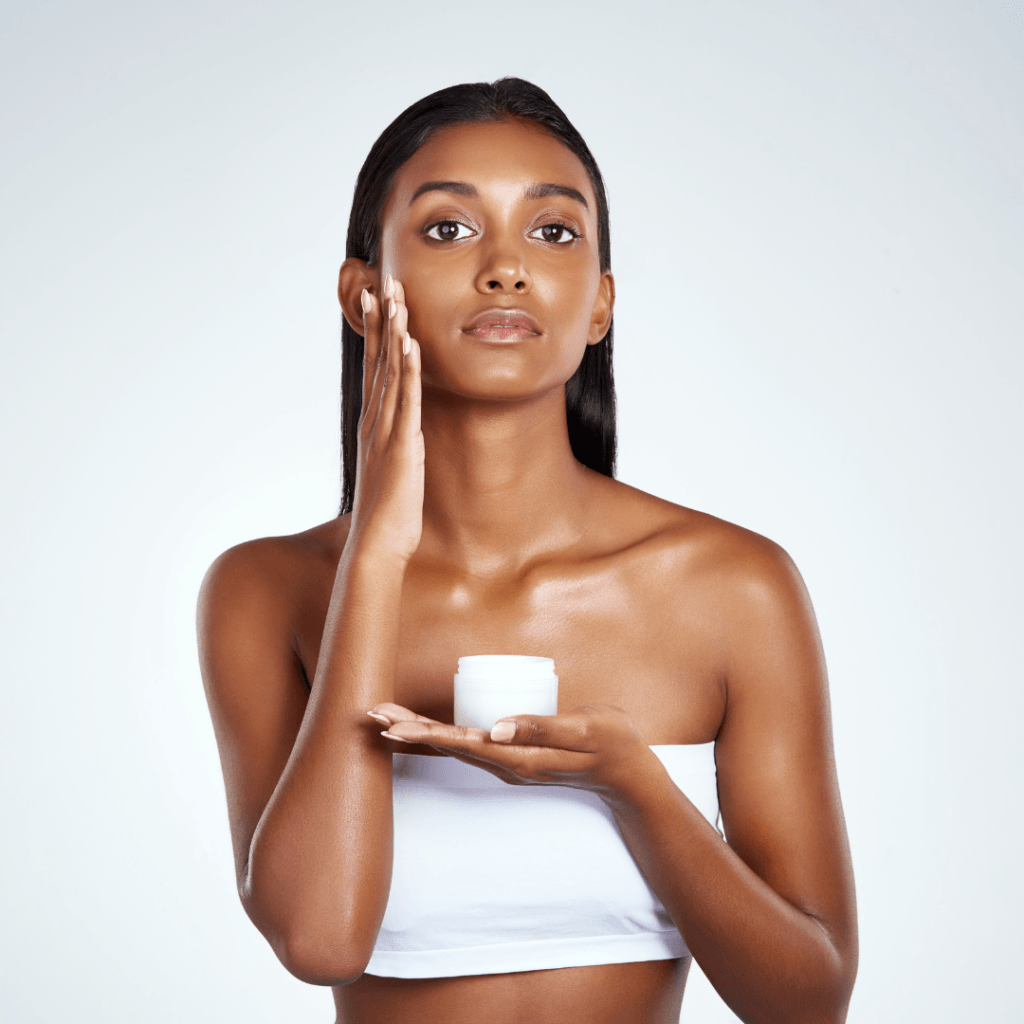This post contains Amazon affiliate links for products that I love.
Disclaimer: While this post aims to provide informative insights, it’s important to note that I am not a doctor, dermatologist, or medical esthetician. For personalized skincare advice, it’s always best to consult a licensed medical professional, ensuring you make informed decisions about your skincare routine.
As a software engineer, I’ve spent years optimizing systems, debugging code, and perfecting workflows. Little did I know that the same principles I apply professionally could be used to create a flawless skincare routine. Welcome to Clearly Glowing, where we take a methodical, data-driven approach to achieving radiant skin.
In this post, we’ll explore how to “Design Your Shine” by breaking down the process into clear, manageable steps. Whether you’re a skincare newbie or a seasoned enthusiast looking to refine your routine, these steps will guide you to a skincare regimen that’s as efficient and effective as a well-engineered software program.
We’ll use the GLOW method to ensure every aspect of your skincare journey is covered:
- G – Goals: Define your skincare objectives
- L – Learn: Research ingredients and products
- O – Optimize: Apply your routine consistently
- W – Watch: Measure results and track progress
Let’s dive into the world of skincare with the precision and clarity of an engineer. By the end of this post, you’ll know how to create and optimize a skincare routine tailored to your unique needs. It’s time to optimize your routine and achieve the glowing skin you’ve always wanted!

Goals
Setting clear, achievable goals is crucial for success in skincare. Like any well-engineered project, focusing on one goal at a time allows you to see better results and make more precise adjustments.
Many organizations talk about setting SMART goals that are Specific, Measurable, Achievable, Relevant, and Time-bound.
When it comes to skincare, we certainly want to work towards a specific goal that is both achievable and relevant. Eliminating pores 100% wouldn’t be achievable, and using acne products probably wouldn’t make sense if you have never had a pimple in your life.
Measurability can vary greatly with skincare goals, and we will discuss some options in the Watch section of this blog post.
Finally, Time-bound goals may or may not make sense for your goals. You may want to clear up your acne before an upcoming event or tackle discoloration over an unspecified amount of time. The sooner, the better, right? However, remember that your skin may not improve as quickly as you hope. Any progress is awesome, so plan for some flexibility, and don’t stress if you don’t have a specific timeframe in mind. Sometimes, it’s better that way!
Start with a Single Goal
Begin by identifying the most pressing issue you want to address. Here’s a typical progression of skincare goals:
- Barrier Repair: If you experience irritation or have sensitive skin, start by aiming to reduce redness and strengthen your skin barrier.
- Acne: Once sensitivity is under control, focus on managing and preventing breakouts.
- Discoloration: After tackling acne, work on evening out skin tone and reducing hyperpigmentation.
- Aging: Finally, incorporate products that prevent or target fine lines, wrinkles, and loss of elasticity.

Select one primary goal to focus on first. For example, if you’re dealing with both acne and discoloration, start with acne since resolving breakouts can help prevent further pigmentation issues. And if you are experiencing skin sensitivity, you always want to repair your skin barrier first since some of the ingredients that tackle acne or pigmentation can be pretty strong. You can move on to the next one as you achieve your primary goal. Or skip ahead if you are lucky enough not to deal with some of the above skin concerns.
Sometimes, having one short-term goal and one long-term goal may also make sense. A short-term goal might be addressing redness in the skin, while a long-term goal could be focusing on preventive aging with antioxidants and hydrating ingredients.
Of course, this is not a comprehensive list of all skin concerns. And for medical skin concerns, like rosacea and acne, please consult a licensed dermatologist.
Know Your Skin Type
Understanding your skin type is essential in setting realistic goals and choosing the right products. Here’s a quick guide:
- Oily: Prone to shine and breakouts, benefits from lightweight, non-comedogenic products.
- Dry: Often feels tight and may flake, needs hydrating and nourishing products.
- Combination: Oily in some areas (usually the T-zone) and dry in others, requires a balanced approach.
- Sensitive: Easily irritated, requires gentle, soothing products.
Define Your Ideals
Your skincare goals should also align with your personal values and preferences. If you value cruelty-free, vegan, or clean beauty products, make this a part of your goal-setting process to look for those products in the next step. This ensures your skincare routine benefits your skin and aligns with your ethical standards.
Learn
Before you start buying all sorts of skincare products, research the ingredients that can help with your chosen goal and compare a few different products containing those ingredients as you plan your routine.
Understand key ingredients
Learn about the active ingredients proven to address your skincare goal, such as panthenol for skin barrier repair, benzoyl peroxide for acne, or vitamin C for discoloration.

Google searches such as “best skincare ingredients for acne” will pull up all sorts of resources, including blog posts and videos by skin experts and dermatologists.
As you narrow down ingredients that you are interested in using, learn whether or not they have the potential to cause skin sensitivity if used too much, especially if you have sensitive skin at baseline. Be aware that even gentle ingredients can disagree with some people’s skin. Perfecting your skincare routine is an art and requires some trial and error to see what will work for you.
Be aware of how long it typically takes to see results from using a particular skincare ingredient. Some must be used for at least 3-6 months to see visible results.
Research Products
Find products containing the ingredients you are interested in using. I like to keep my skincare routine from escalating into a 15-step process, so I tend to favor products packed with many ingredients.
Remember your skin type and any requirements that you have about the kinds of products that you want to use.
You will also need to consider your budget. When evaluating a product’s price, consider how long it should last. Sometimes, I go through large bottles of cleansers quickly, but then I take three months to use up a teeny tiny jar of eye cream. And I am currently using a bottle of salicylic acid toner that I am convinced will last me a whole year because I only use a little of it each night.
All the proven active ingredients can be found in a wide range of products, from budget options to premium and luxury ones. New ingredients patented by a single company will likely be more expensive to cover the research and development costs (and because they can).
Curate Your Routine
When researching different product options, you can either use an entire branded skincare line or pick and choose products from various brands. Using products from just one skincare line will save you time, and they will usually be formulated to complement each other, especially in their pH levels. Curating products from various brands gives you more flexibility to combine ingredients you are interested in, but it takes more research time.
You will also want to look into ingredients that shouldn’t be used together. Some ingredient combinations increase the risk of skin sensitivity, and other combinations might cancel each other out, resulting in you wasting your money and time. This is another area where using products from one brand line can simplify your research because they are formulated to be used together.
If you are building your skincare routine from scratch, start simple. You can always add more products later. At a minimum, you will want a cleanser, sunscreen, and moisturizer. And if you are working on a specific skin concern, you may have a treatment step too.
Beyond the basics, you can enhance your skincare routine with serums, exfoliators, and masks.
Optimize
The fun begins as you start using the products you have curated for your skincare routine!
Layer products the right way
The order in which you use your skincare products matters to ensure you get the most out of them.
An order of application typically goes like this:
- Cleanser
- Exfoliator
- Treatment
- Serums, from lightest to heaviest consistency
- Moisturizer
- SPF (in the morning)
You do not have to have all these steps in your skincare routine!
Consistency is Key
Stick to your skincare routine and make it a habit to use your products regularly. Many products are meant for daily or twice-daily use, while some are intended to be used 1-3 times a week.

Staying consistent is crucial because haphazard use wastes your money and time. Consistent use of good ingredients is much more likely to result in actual progress toward your skin goals.
Put your skincare products in a place that is easy to access and will help you remember to use them. I use distinct products for my morning and night skincare routines, so I keep them in one spot in clear acrylic bins. They are so easy and convenient for me to use when I can grab one bin for my morning or night routine and don’t have to think about which products to pull out of my cabinet.
Maximize Product Efficacy
Ensure you understand how to use and apply each skincare product. Is it meant to be used once or twice daily?
Cleansers can sometimes have different instructions about whether to start with water or add it after you have massaged the cleanser onto your skin.
Apply toners or thin liquids directly with your fingers or medical cotton gauze instead of cotton balls or pads that will soak up too much product and waste it.
Use the right amount. Applying too little of a product will make it ineffective, while too much can cause irritation or be wasteful.
Watch
Monitor your skincare routine and make adjustments as needed. In engineering, everyone wants to make data-driven decisions, and I believe we can do the same with our skin.
This is where the Measurable part of our SMART goals comes into play.
Set up a system to track progress, recognize results or issues, and understand when to seek professional advice.
Establish Your Baselines
Take a “before” picture of your face in good lighting from a few different angles. Document how your skin feels, such as tightness, oiliness, or irritation.
Consider keeping a skincare journal to document what products you are using and what you see and feel in your skin.
Also, consider adding one new skincare product at a time to your routine. This is really difficult for me because I get excited about so many different products that I want to try. However, it is way easier to tell if a product is helping or causing an adverse reaction if you have only introduced one new product into your routine.
Decide how you will measure progress
Will you simply document visible results using your skincare journal and/or photos? Nowadays, there are also apps that analyze photos of your skin to measure improvements in blemishes, redness, hyperpigmentation, and fine lines.
If your goal is to go from dry or dehydrated to well-moisturized skin, inexpensive skin moisture analyzers can quantify your progress.
Whatever you choose to measure with, decide on a regular interval to check on your progress. Weekly or monthly tends to be a good choice. Daily monitoring can make it seem like no progress is being made because skincare takes time to work.
Adjust as needed
Use the data you collect to make informed adjustments to your skincare routine. If a product isn’t delivering the expected results and you have given it 3-6 months, try another product or look into other ingredients.
If you notice any negative reactions, such as irritation, increased skin sensitivity, or acne breakouts, stop using the product immediately.
Seek professional help if you experience severe reactions, persistent skin issues, or do not see desired results after a reasonable period of time. It can be fun to try curating a skincare routine all on your own. Still, sometimes, a prescription is needed, and a dermatologist can review the products you are using and make recommendations specifically for your skin. A medical esthetician may also be able to speed up your results with in-office treatments.
Share your current skincare goal and how you measure progress in the comments below!

